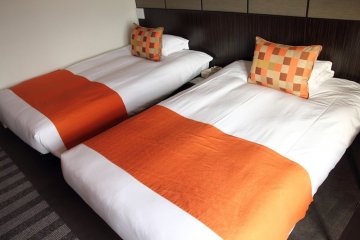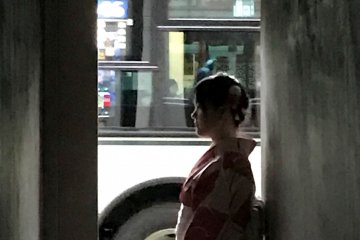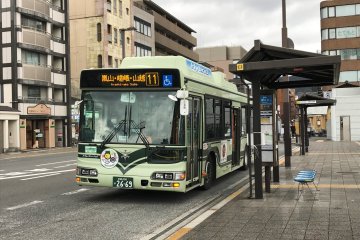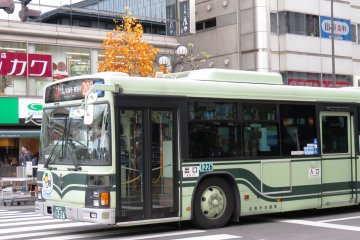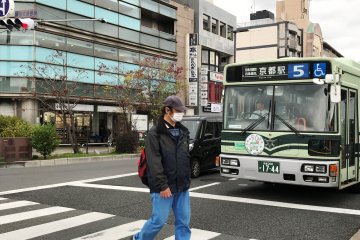Kyoto is a reasonably compact city with grid like streets, but it is not small enough for you to walk to all the sights. This is where the bus comes in. While the subway is quick and hard to get lost, most sights are actually some distance from the subway or train station, except Nijo Castle, Imperial Palace, the Furniture District in Ebisugawa and Gion. So invariably you need to learn how the buses work.
Luckily the buses are designed for the tourist in mind, and especially if you start with some of the loop (circular) routes, you will get to know your bearings within a day or so.
These loop buses are called raku bus, routes 100, 101 and 102, taking you to places like the golden temple (Kinkakuij).
The ¥600 day pass is a great deal, and it pays for itself after three trips. What’s more, if you get lost or go past your stop, you can always get another bus back without worrying about paying another fare with the day pass. Alternatively, for ¥900, a combined bus and subway pass is another option. Both day passes expire at midnight, so it is best to use these passes from the morning.
There are some basics when you use the bus:
- There are two kinds of buses in Kyoto City. The city buses are green and white.
- Board at the back The entrance is actually at the back door, which makes it easy if you are running for the bus.
- There is a taped announcement for the next stop. This is in English and Japanese, as well as a running display. When your stop is up, press the stop button and go the front to exit.
- You pay your fare when you get off. To use the bus within the city center, the fare is ¥220 for adults, and ¥110 for children (aged 6 to 12 years).It doesn't matter if you are traveling one or ten stops, as long as you are in the city bus the fare is the same. So you may as well walk if you are just going one stop.
- Buses can get quite full, especially near the main centers. This includes Shijo, Gion or JR Kyoto. Knowing the other routes besides the raku bus may help you skip the crowds, such as the 204 and 205, which also gets you to Kinkakuji. Alternatively plan a day seeing the sights near the train when it is crowded (e.g. spring and autumn weekends and main festivals/ public holidays. If you are in a group of three or more, a taxi or guided taxi may be more comfortable for you.
If you are not going to cover a lot of ground in a day, hiring a bicycle is often a good alternative (see these cycling rules).
If you are heading out of the city center, however, you are likely to get an outer suburban red and white bus, to places like Ohara. These buses have a route number in black on a white background, and the fare depends on the distance traveled. Be sure to take a numbered ticket from the machine on your left when you board the bus. When you get off the bus, check the fare against your numbered ticket, and put the fare and ticket in the machine next to the driver. If you don't have exact change, then there is a change machine slot next to the driver which you can get change, preferably before your stop so you don't hold other people up. If you are using a prepaid bus card, make sure you to put your card into the card reader machine






